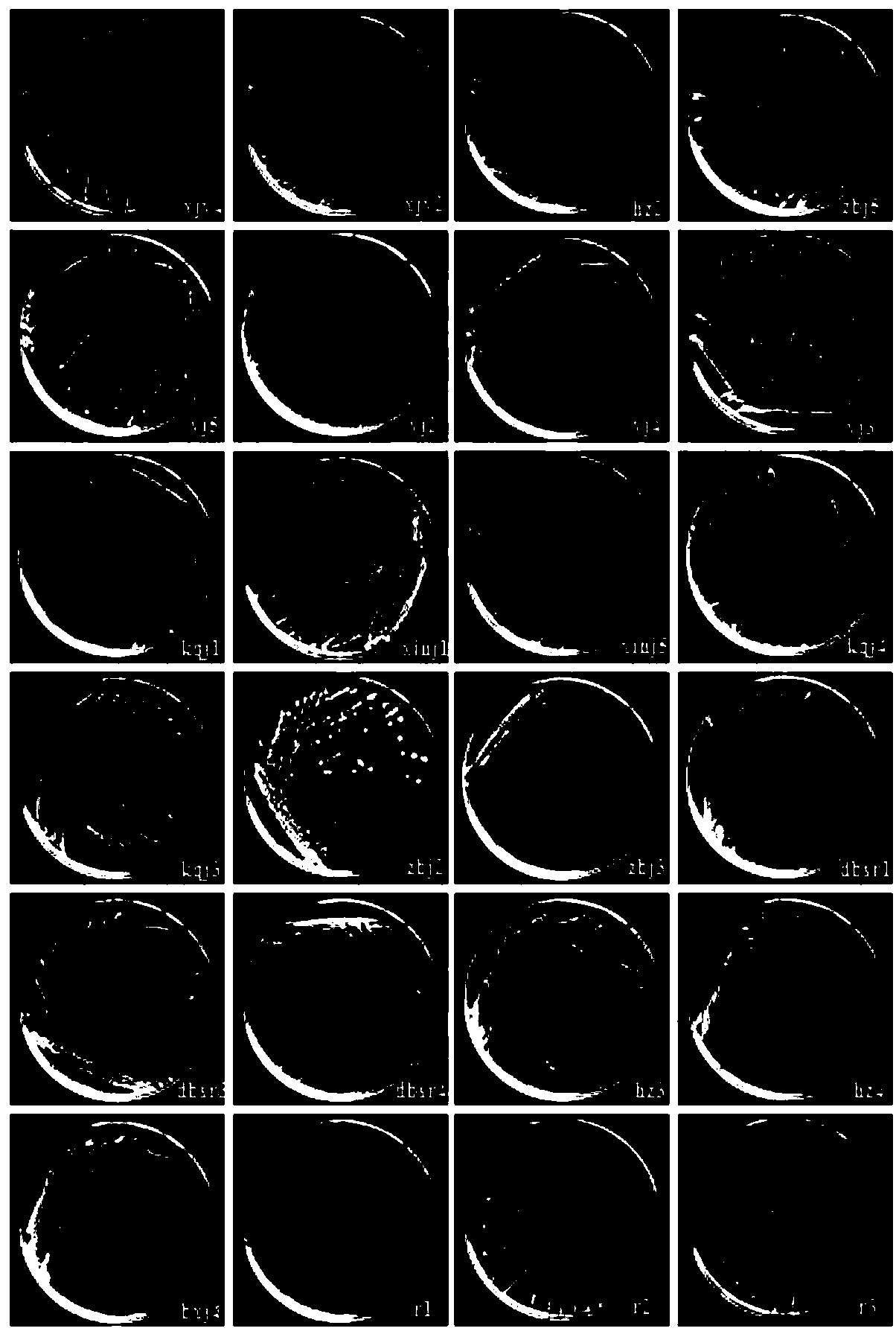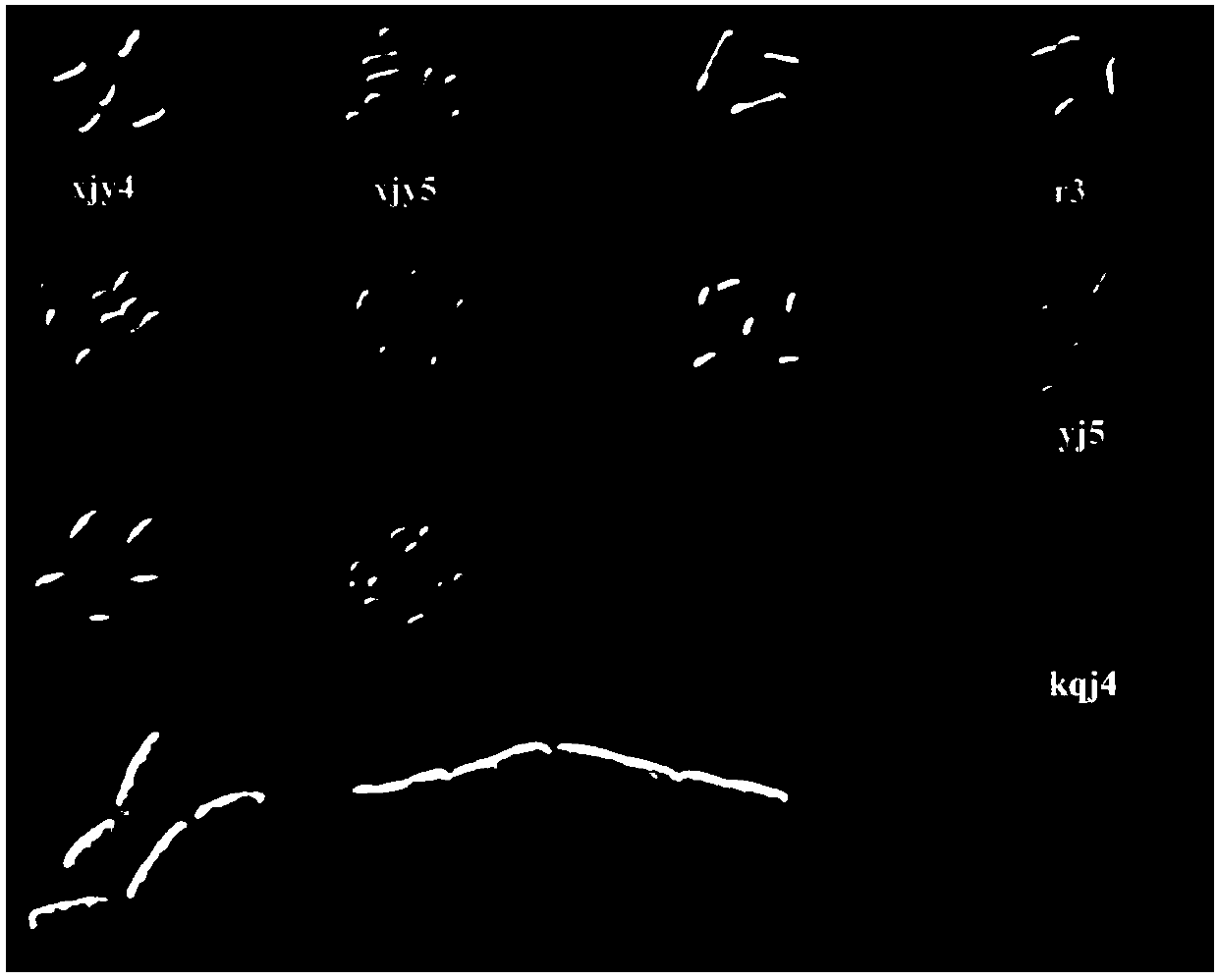Radopholus similis associated bacteria with potential of genetic transformation
A technology for banana nematodes and associated bacteria, applied in the direction of bacteria, nematicides, biocides, etc., can solve the problem of no biocontrol effect of banana nematode associated bacteria, and achieve strong genetic transformation potential, good application prospects, and stable associated relationships Effect
- Summary
- Abstract
- Description
- Claims
- Application Information
AI Technical Summary
Problems solved by technology
Method used
Image
Examples
Embodiment 1
[0031] Example 1 Acquisition of Pseudomonas fluorescens pf36, an associated bacterium of the banana borer nematode
[0032] 1. Isolation and purification of the bacteria associated with the banana borer nematode and the endophytic bacteria of the carrot callus
[0033] (1) Isolation of bacteria associated with the banana borer nematode
[0034] In order to ensure that the isolated bacteria have a stable companionship with the nematode spp., 10 populations of stencils from different host plants (Table 1) were subcultured on the carrot callus for more than 3 times. The subcultured banana borer nematodes (mixed nematodes) were collected and placed in 1.5 ml sterilized centrifuge tubes (about 1000). Centrifuge at 4500rpm for 45s, discard the supernatant, wash the nematodes repeatedly 3 times, then grind the nematodes collected at the bottom of the tube thoroughly with a sterilized glass rod, add 1ml of sterile water and shake well, absorb 50μl of the grinding solution and spread ...
Embodiment 2
[0071] Example 2 Application of Pseudomonas fluorescens associated with banana nematode in the control of banana nematode
[0072] 1. Introduction of protease pase4 gene into bananas to wear the associated bacteria - Pseudomonas fluorescens
[0073] (1) Conversion method
[0074] The protease pase4 gene was introduced into the target bacteria Pseudomonas fluorescens pf36 through vector transformation and conjugation transposition respectively. The nucleotide sequence of the protease pase4 gene is shown in SEQ ID NO.1.
[0075] ① Vector transformation method
[0076] Using the recombinant plasmid pase4-pEASY connected with the protease pase4 gene preserved in the laboratory as a template, use the following primers to amplify the protease pase4 gene.
[0077] Upstream primer M1:
[0078]
[0079] The lower horizontal line is the EcoR I restriction site, and the wavy line is the ribosome binding site;
[0080] Downstream primer M2:
[0081]
[0082] The lower horizont...
PUM
 Login to View More
Login to View More Abstract
Description
Claims
Application Information
 Login to View More
Login to View More - R&D
- Intellectual Property
- Life Sciences
- Materials
- Tech Scout
- Unparalleled Data Quality
- Higher Quality Content
- 60% Fewer Hallucinations
Browse by: Latest US Patents, China's latest patents, Technical Efficacy Thesaurus, Application Domain, Technology Topic, Popular Technical Reports.
© 2025 PatSnap. All rights reserved.Legal|Privacy policy|Modern Slavery Act Transparency Statement|Sitemap|About US| Contact US: help@patsnap.com



